The Future of Dance: Look Inside the New Doris Duke Theatre at Jacob’s Pillow
The nations most advanced dance theater opens at Jacob's Pillow. Take the tour.

The nations most advanced dance theater opens at Jacob's Pillow. Take the tour.
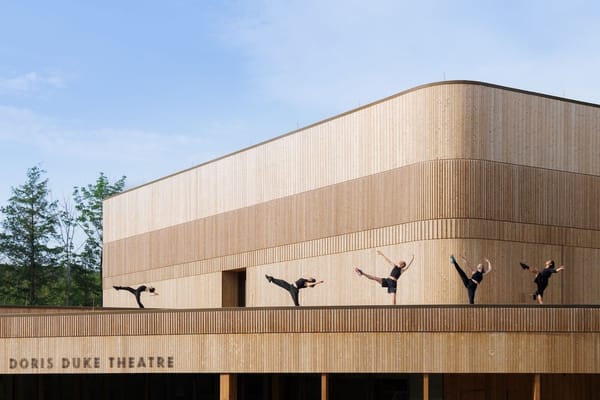
Doris Duke Theatre on the Jacob's Pillow Campus. Courtesy of Jacob's Pillow.
- Iwan Baan(Editor’s note: after the release of this article, The Jacob’s Pillow Board of directors canceled the 2025 Festival season, due to the passing of an employee in a workplace accident. Future events at the site discussed in this article will not take place.)
After five years of planning, rebuilding, and reimagining, the new Doris Duke Theatre at Jacob’s Pillow officially opened its doors on July 9. The high-profile ribbon cutting marked a defining moment in the historic dance institution’s 93rd season. Built on the site of the original theater, which was destroyed in a fire in 2020, the new 20,000-square-foot venue is being hailed as one of the most technologically advanced dance theaters in the world.
Designed by Dutch architecture firm Mecanoo, in collaboration with New York-based Marvel and Charcoalblue for acoustics and theater design, the space not only restores a performance venue to the Jacob’s Pillow campus but also expands its reach into the future of dance as an art form.
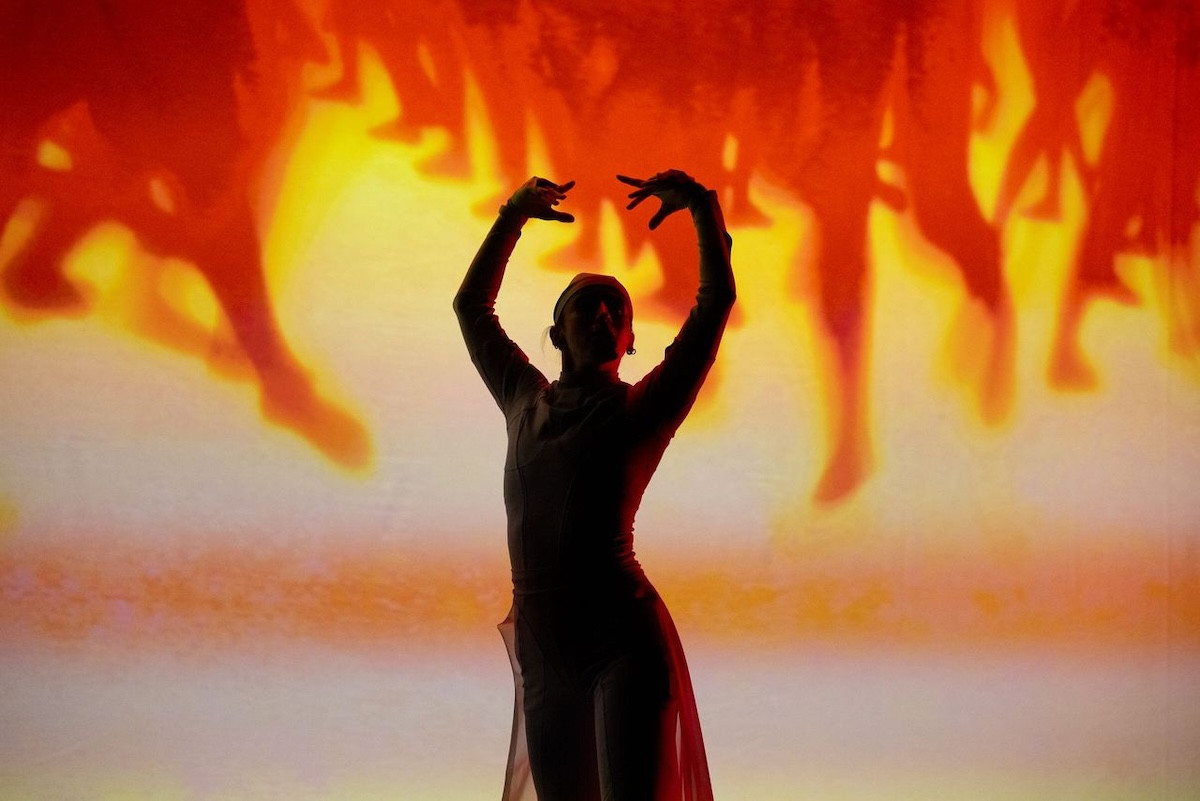
Elaini Lalousis in Alexander Whitley’s “Otmo Live_ Interstice” at the dress rehearsal for the Doris Duke opening program at Jacob’s Pillow Dance Festival 2025. Photo by Jamie Kraus.
“The Doris Duke Theatre now carries forward the legacy of this place while opening new pathways for artists and audiences to experience the work of our time,” says Pamela Tatge, executive and artistic director of Jacob’s Pillow. “This theater renews our commitment to possibility.”
The new Duke has been conceived as a “makerspace” for artists eager to explore the intersection of live performance and emerging technologies. Capabilities include spatial audio, infrared tracking for interactive video, motion-capture integration, and immersive projections. These features aim to support dance that embraces artificial intelligence, robotics, and augmented reality.
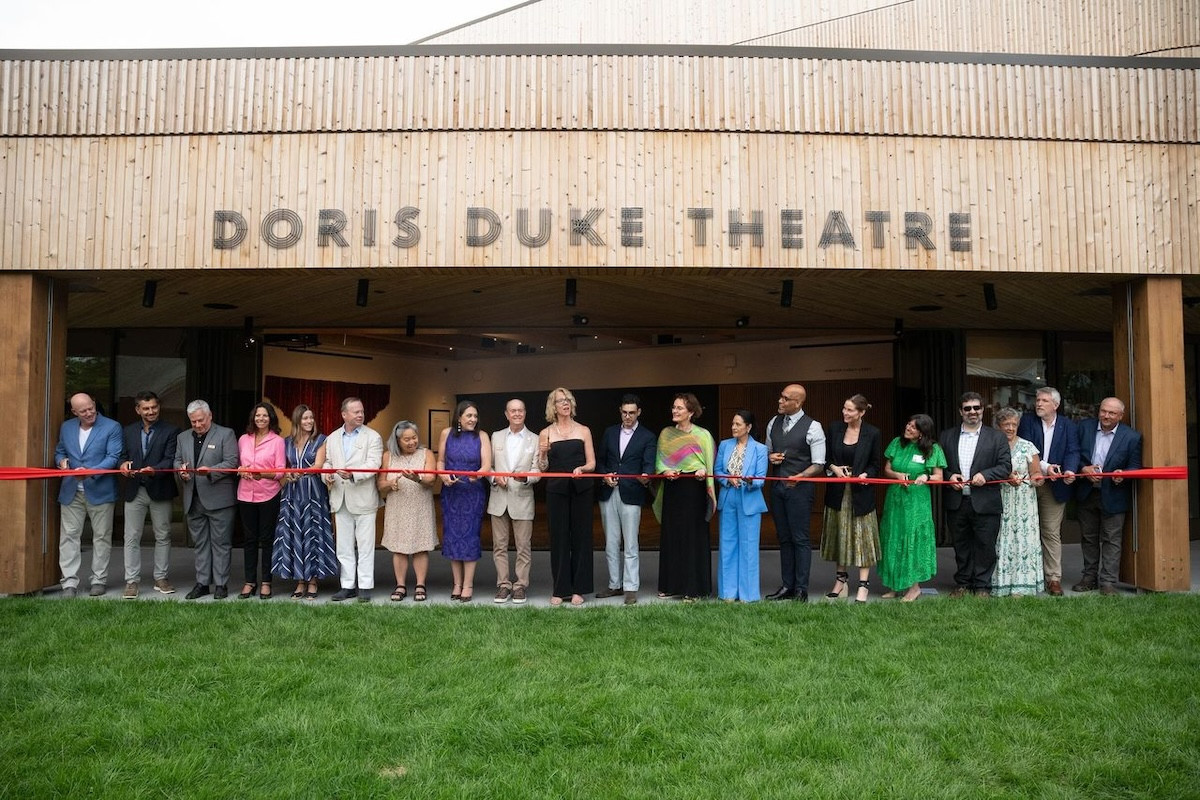
Jacob’s Pillow leadership and regional stakeholders cut the ribbon to officially open the theater. Photo by Jamie Kraus.
Francine Houben, Mecanoo’s creative director, describes the new space as “a magic wooden box which awakens the senses and deepens the connection between performer and audience, movement and space, light and shadow.”
A blend of nature and technology is intentionally woven throughout the building’s design. Its mass timber frame and thermally treated pine facade are built to weather naturally over time. Landscaping around the theater includes Indigenous-design-inspired gardens and a communal fire pit, in acknowledgment that the property exists on the ancestral homelands of the Mohican people.

Inside the Doris Duke Theatre lobby on the Jacob's Pillow Campus. Photo by Iwan Baan; Courtesy of Jacob's Pillow.
The theater’s inaugural week featured a star-studded lineup of events and performances that acknowledged the past and celebrated the future. The program began with an “honor song” by members of the Stockbridge-Munsee Band of Mohicans and included a movement choreographed by Annie-B Parson performed by 12 celebrated dancers.
A piece by Shamel Pitts and TRIBE was also performed. The group’s piece “Touch of RED” was developed at the original Duke during its final Pillow Lab residency before the fire. Additionally, in connection with the theater’s new technological resources, a motion-capture duet by the UK’s Alexander Whitley Dance Company, connected dancers across theaters in both countries in real time.
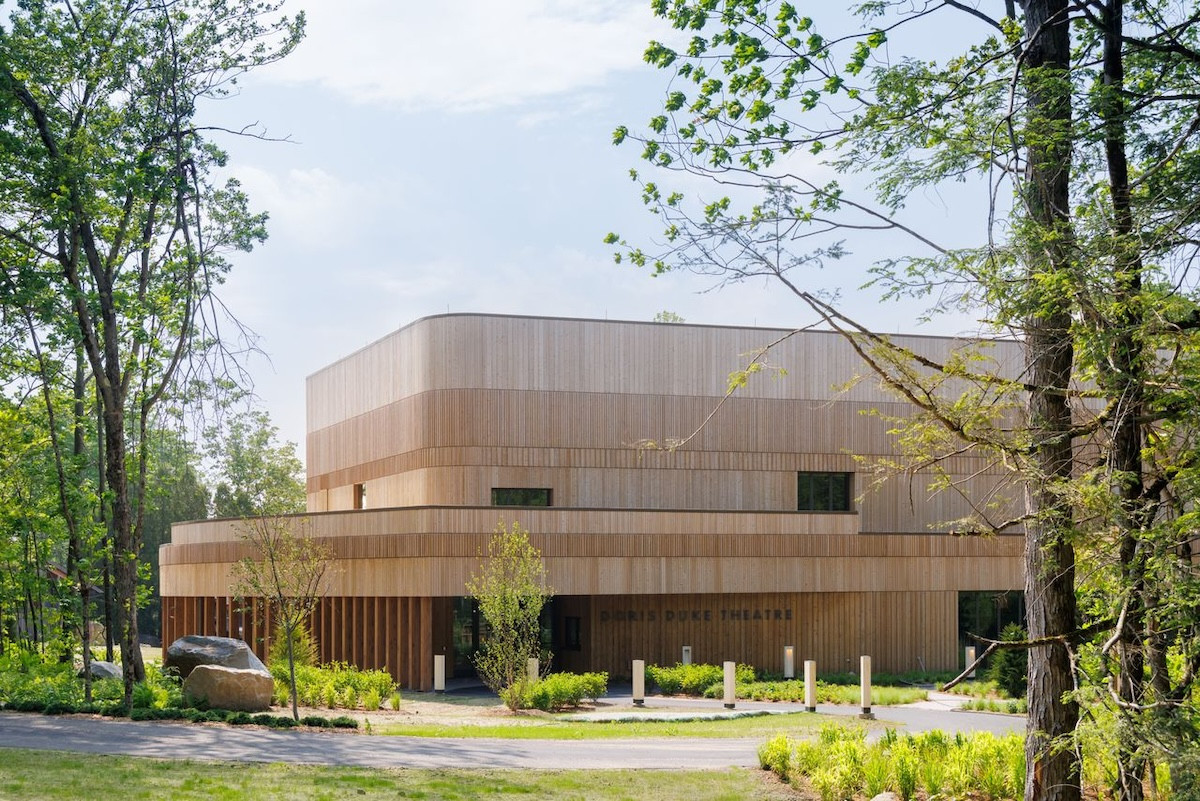
Doris Duke Theatre on the Jacob's Pillow Campus. Photo by Iwan Baan; Courtesy of Jacob's Pillow.
A film excerpt by Memo Akten and Katie Peyton Hofstadter and performances by Ryan Johnson and JD Samson capped off by an immersive, augmented reality dance party.
“The Pillow’s investment in emerging technologies sets a powerful precedent,” says choreographer Katherine Helen Fisher, whose exhibition “Dancing the Algorithm” inaugurated the theater’s gallery space. “Institutions like Jacob’s Pillow are essential in sustaining this work, ensuring that tomorrow’s artists have the resources and a trusted platform to imagine new futures.”

The Ribbon Cutting was a festival itself. Photo by Jamie Kraus.
The opening night was just the beginning. On Wednesday, July 16, the new Doris Duke Theatre launched its first full week of programming with the world premiere of “HERE,” Andrew Schneider’s multimedia exploration, with additional performances at 2:30pm and 8pm, through Sunday, July 20.
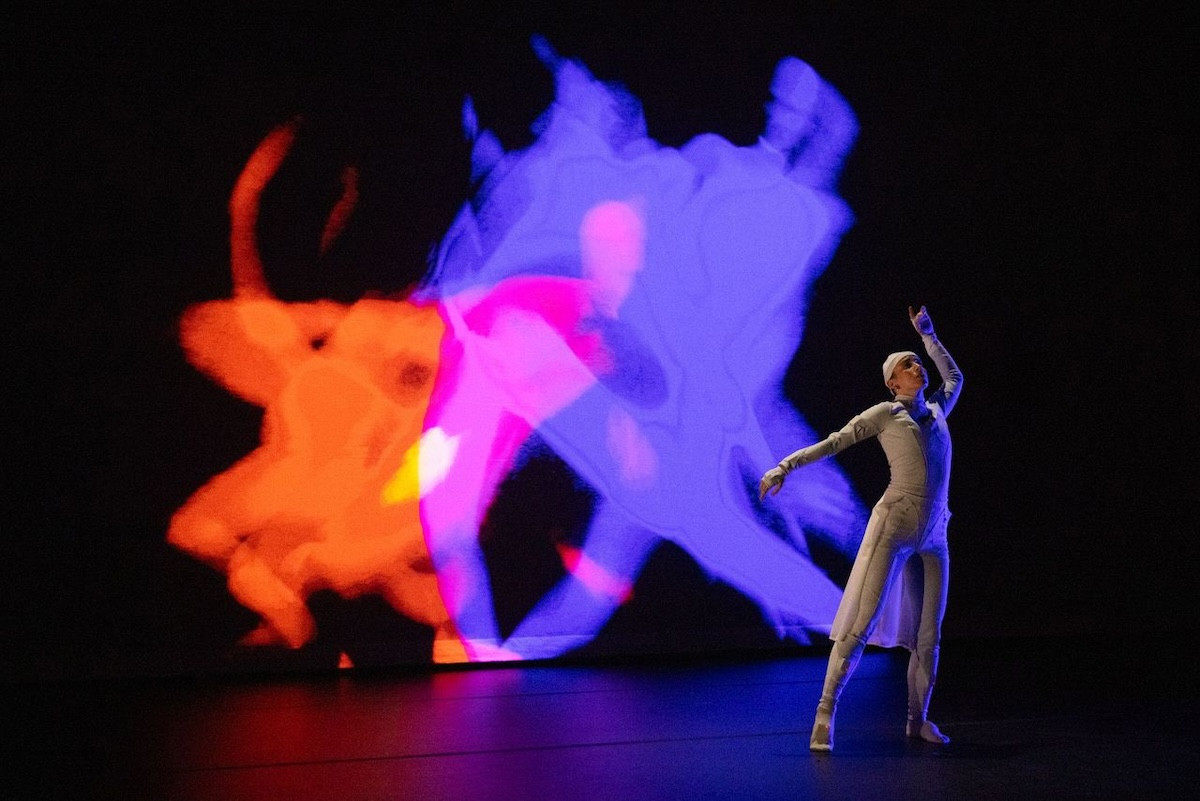
Elaini Lalousis in Alexander Whitley’s “Otmo Live_ Interstice” at the dress rehearsal for the Doris Duke opening program at Jacob’s Pillow Dance Festival 2025. Photo by Jamie Kraus.
Following Schneider’s run, Indigenous Sámi choreographer Elle Sofe will perform “Vástádus eana – the Answer is Land” July 23-27, with showtimes at 8pm each night. Korean choreographer Eun‑Me Ahn presents “Dragons” at 8 pm July 30-August 3. “Dragons,” is her U.S. debut and offers a striking fusion of live dancers and 3D holographic imagery that blurs physical presence with projected illusions.
Then, Faye Driscoll—winner of both the Jacob’s Pillow Dance Award and a Doris Duke Award—offers ”Weathering,” a multisensory performance featuring sculptural configurations of bodies, sound, scent, and liquid that evoke the shifting landscapes of the Anthropocene. She performs from August 13 to 17. To end the Summer festival season at the Duke Taiwanese choreographer Huang Yi brings “Ink,” a poetic dialogue between dance, robotic movement, and calligraphy, continuing the theatre’s commitment to elevating boundary‑defying, technology‑infused work August 20–24.

Shamel Pitts and Tushrik Fredericks in “Touch of RED (Excerpt)” at the dress rehearsal for the Doris Duke Theatre opening program at Jacob’s Pillow Dance Festival 2025. Photo by Christopher Duggan.
In the aftermath of the fire that destroyed the original theater, the Pillow faced difficult questions: whether to rebuild, how to honor the past, and how to meet the needs of a rapidly changing performance landscape.
The new venue, supported by major donations from the Doris Duke Foundation and many others, decided to answer boldly. “There is one constant at Jacob's Pillow: pushing boundaries,” says Sam Gill, president and CEO of the foundation. “The new Doris Duke Theatre exemplifies this tradition.”
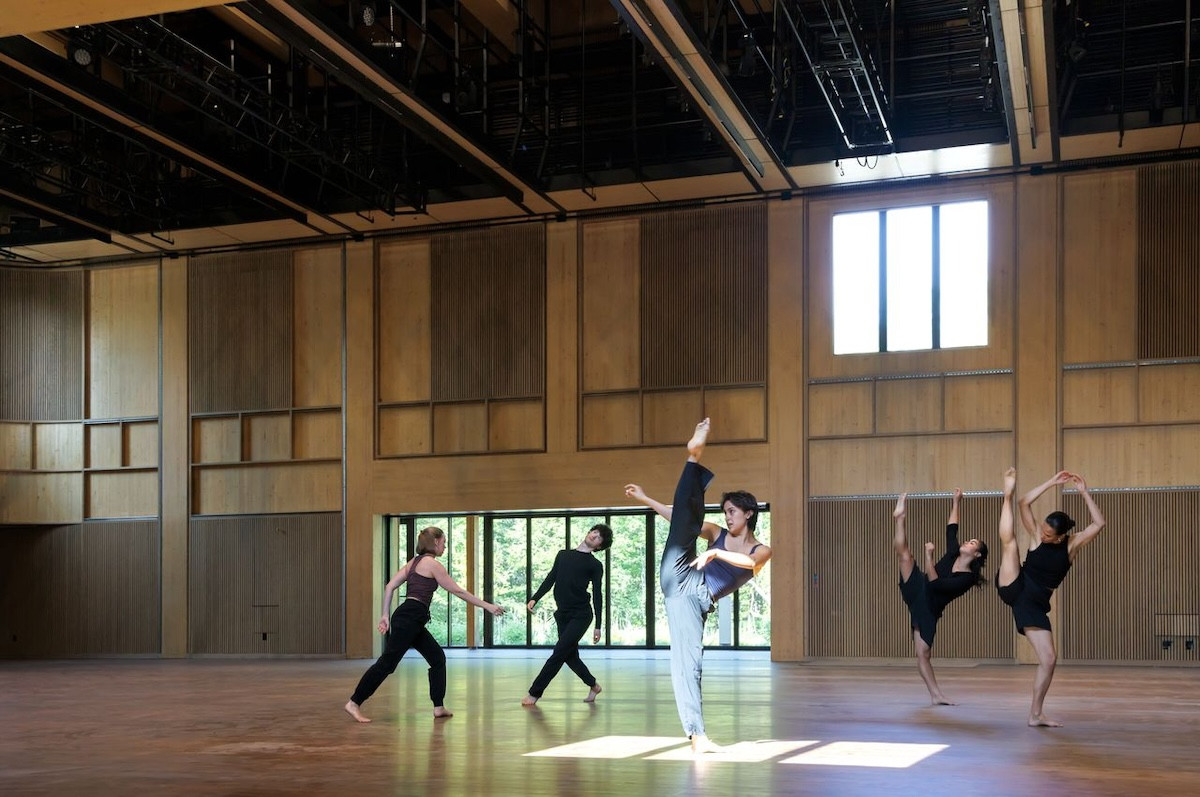
Doris Duke Theatre on the Jacob's Pillow Campus. Photo by Iwan Baan; Courtesy of Jacob's Pillow.
Jonathan Marvel, principal at Marvel, said this progressive approach was applied not just technologically but in the way the project incorporated historic and site-specific inspiration. “When our Indigenous collaborator Jeffrey Gibson gave us the design guideline ‘where the land meets the sky,’ we knew this project would be organic,” he says. “Borrowing from the woods and distant hills.”
In size, the new Duke is more than double the footprint of the original. It seats up to 400 people, supports flexible programming, and will serve as a site for residencies and education. The upcoming fall Pillow Lab residency by Grisha Coleman will use motion-capture technology to create “kinetic haiku,” intentionally pushing the artistic possibilities of the space.
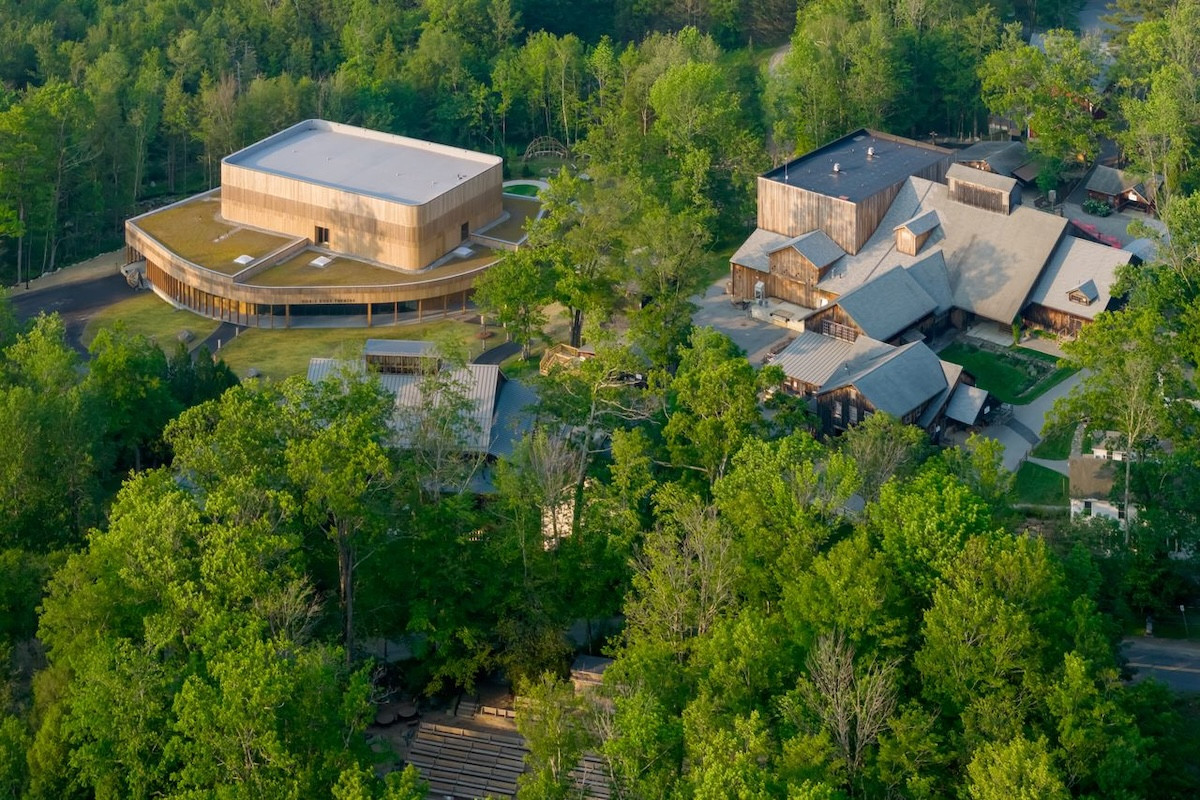
Doris Duke Theatre on the Jacob's Pillow Campus. Photo by Iwan Baan; Courtesy of Jacob's Pillow.
As the only new US dance theater of its kind, and a restoration of Jacob’s Pillow’s three-stage campus, the new Doris Duke Theatre is a return, a leap forward, and one of the most exciting new arts venues to visit in the region, nation, and beyond.